Irish Whiskey: History, Types, and 4 Great Distilleries to Visit
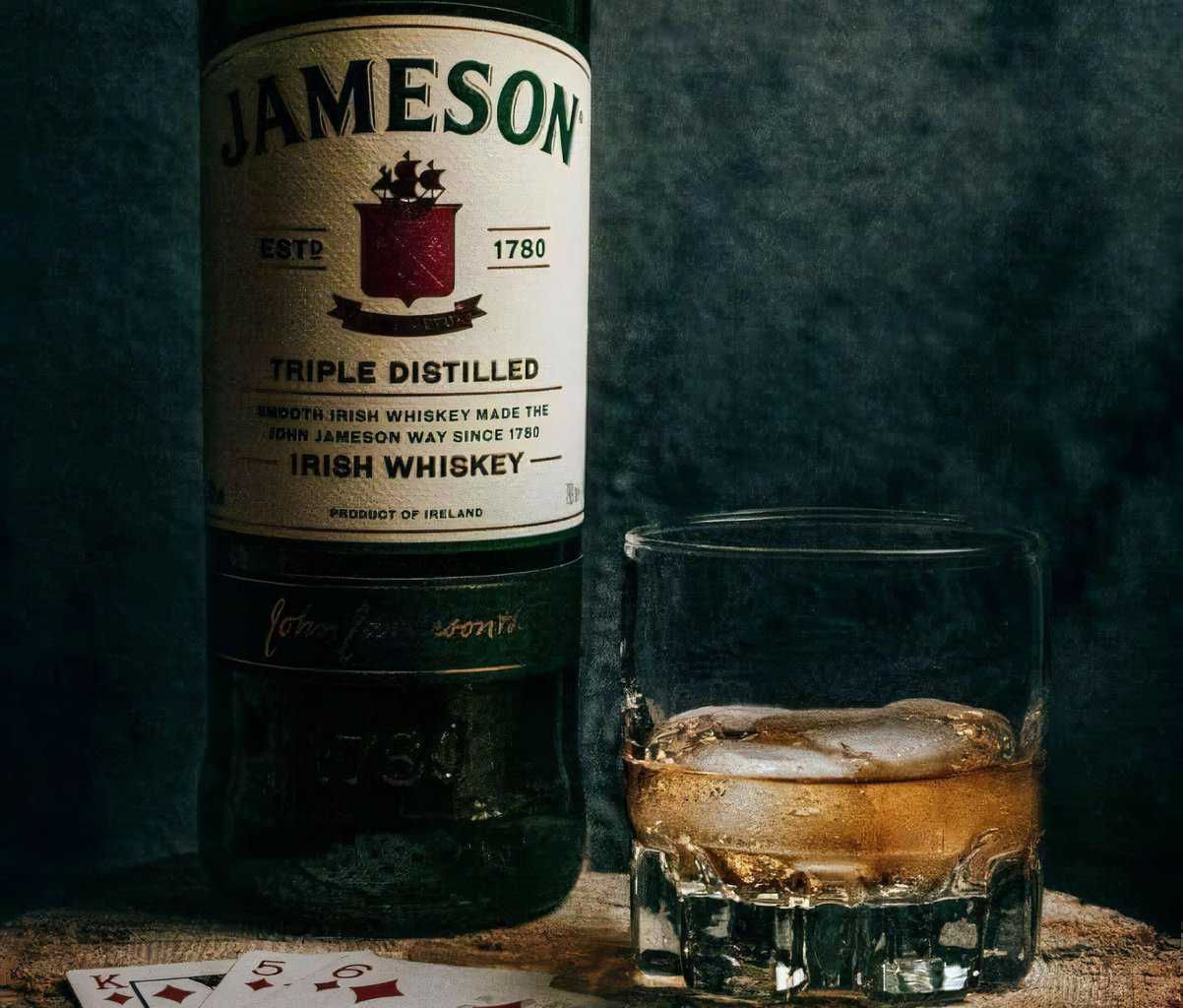
Updated On: April 22, 2024 by Courtney Augello
Made within Ireland’s verdant landscapes and storied history lies a spirit embodying the nation’s very essence – Irish whiskey. Beyond its amber hue and intricate flavours, the whiskey carries with it a tale of ingenuity, resilience, and cultural significance that stretches back centuries.
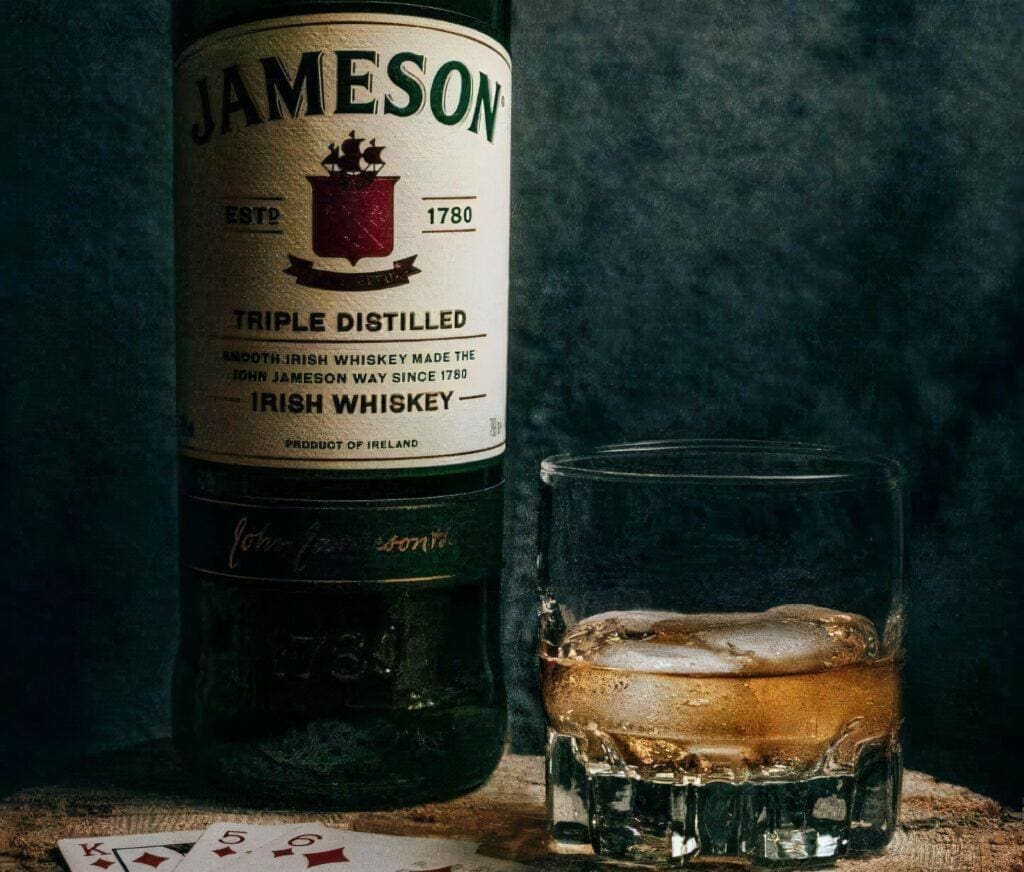
From the historic monastic distillation practices to the contemporary resurgence in the modern whiskey landscape, Irish whiskey’s story is one of tradition, innovation, and the artistry of generations past and present.
To fully capture the evolution and significance of Irish whiskey, we’ve examined its roots, cultural importance, key techniques, and diverse types. All of these characteristics make it one of the most popular spirits in the world.
Table of Contents
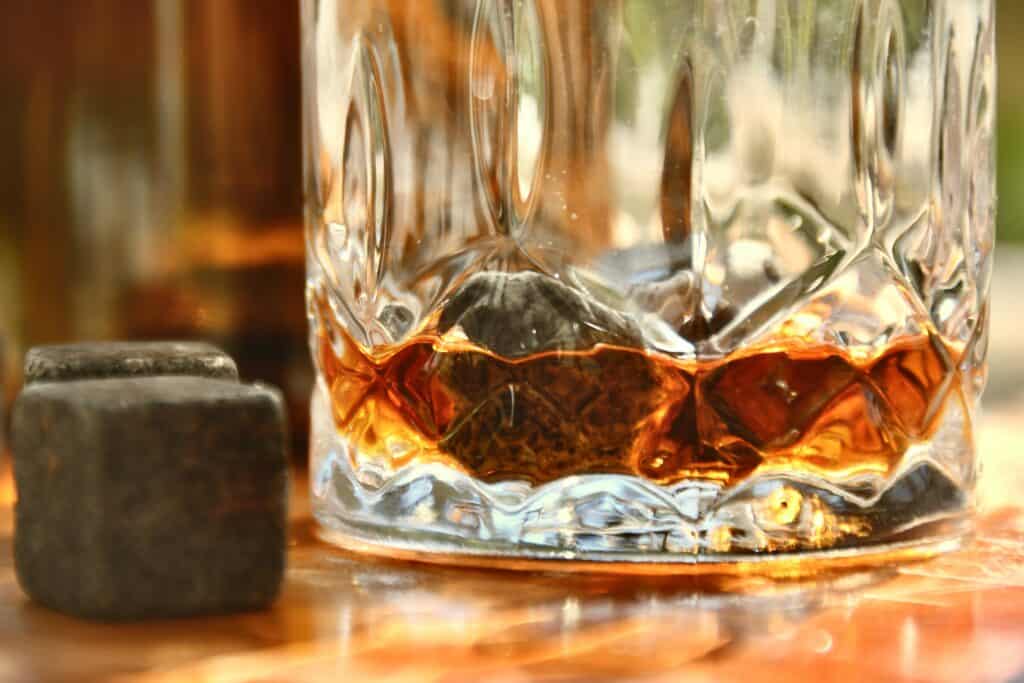
Historical Evolution of Irish Whiskey
Early Origins
Role of Irish Monks
The origins of Irish whiskey can be traced back to the monastic distillation practices of early Ireland. The history of distillation itself is deeply intertwined with the advancement of knowledge within religious communities, and the Irish monks played a pivotal role in preserving this ancient art.
Around the 6th to 7th centuries, these monks are believed to have acquired distillation techniques from the Arab world and adapted them to create various alcoholic concoctions, including the precursor to whiskey.
Irish monks, known for their scholarly pursuits and dedication to learning, recognised the potential of distillation for medicinal and spiritual purposes. Their monastic settlements, nestled in the lush landscapes of Ireland, provided an ideal environment for cultivating the necessary botanicals and grains.
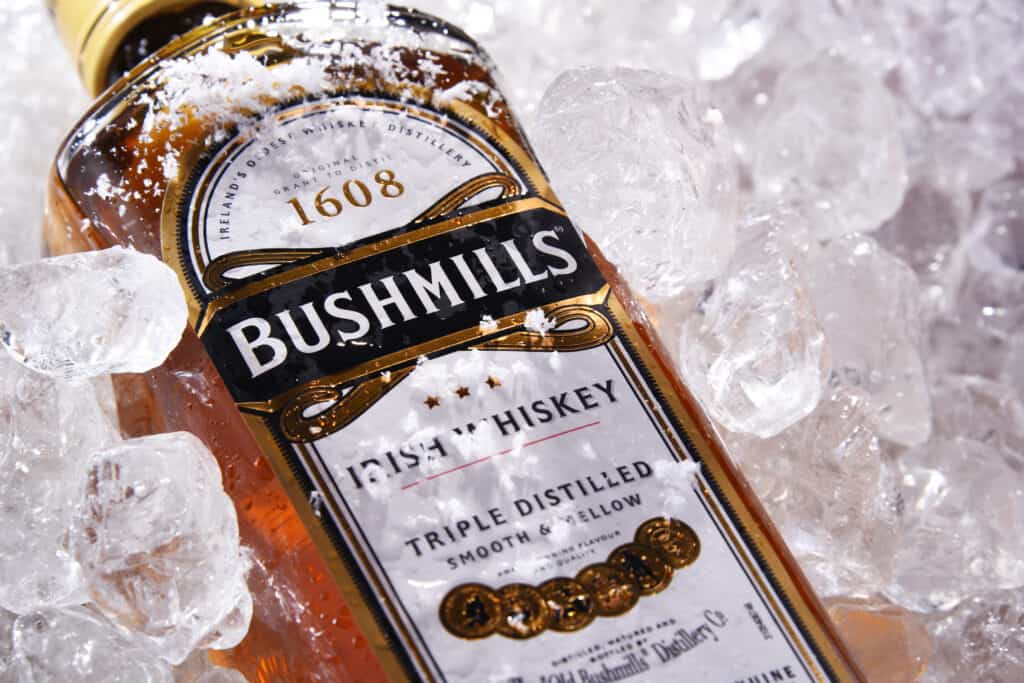
Development of Uisce Beatha
Uisce beatha, with its origins dating back to the early Middle Ages, was a clear predecessor to the modern Irish whiskey we know today. The process of creating uisce beatha involved distilling fermented mash, usually made from malted barley, into a potent spirit.
The term “uisce beatha”, literally translated as “water of life”, reflected the reverence the Irish held for this distilled spirit, which was believed to possess healing properties for both the body and the soul. It was a drink and a cultural embodiment of life and vitality. Over time, the pronunciation of “uisce beatha” evolved into “usquebaugh” and later morphed into “whiskey.”
The early Irish distillers’ emphasis on purity and the pursuit of excellence laid the foundation for the distinct characteristics that their whiskey would eventually become known for – its smoothness, subtlety, and approachability.
The monastic distillation practices of the Irish monks were not only a testament to their innovative spirit but also a crucial step in the evolution of Irish whiskey, a legacy that continues to shape the industry’s identity and reputation to this day.
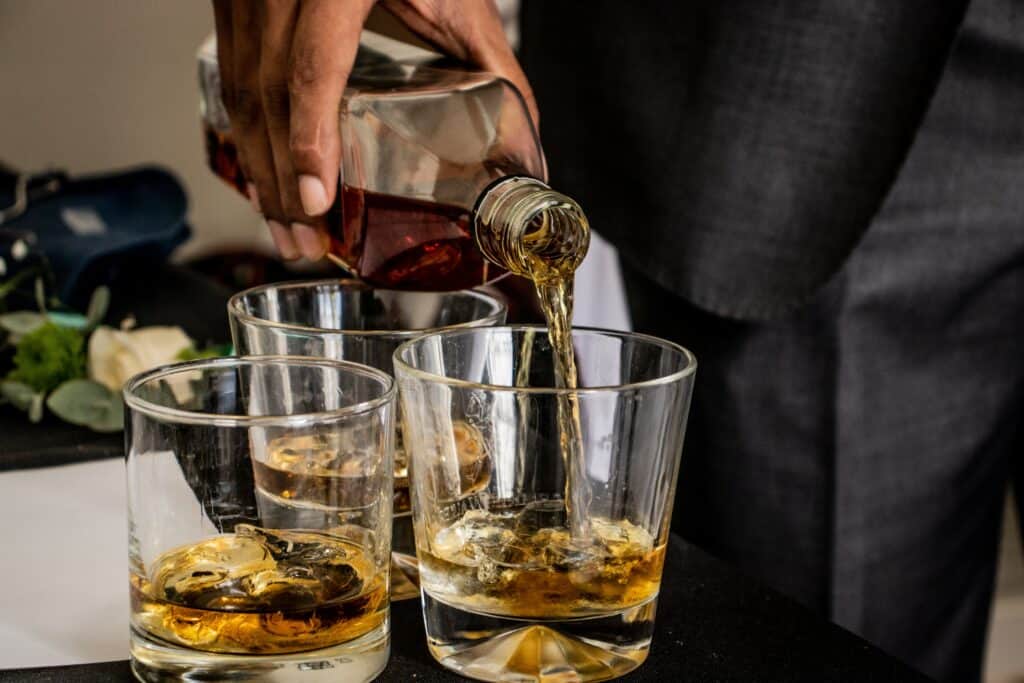
Growth During the 18th and 19th Centuries
Introduction of Column Stills
The 18th and 19th centuries marked a significant period of growth and transformation for Irish whiskey, characterised by technological innovations and a burgeoning industry. This era witnessed the introduction of key advancements that would shape the production and reputation of the whiskey on a global scale.
One of the most transformative developments during this time was the adoption of column stills in Irish whiskey production. Column stills, also known as continuous stills or Coffey stills, represented a departure from the traditional pot stills used by the Irish distillers.
The use of column stills in whiskey production profoundly impacted the industry. The resulting spirit was lighter, smoother, and more neutral in flavour compared to the richer and more robust pot still distillates.
This difference in flavour profile set Irish whiskey apart from other types of whiskey, particularly Scotch whisky, which retained its traditional pot still distillation method. The column stills increased production capacity and contributed to the distinct character that defines Irish whiskey to this day.
Rise of Distilleries in Dublin
Dublin emerged as a significant hub for whiskey production during the 18th and 19th centuries. The city’s proximity to ample supplies of barley and access to trade routes facilitated the establishment of numerous distilleries.
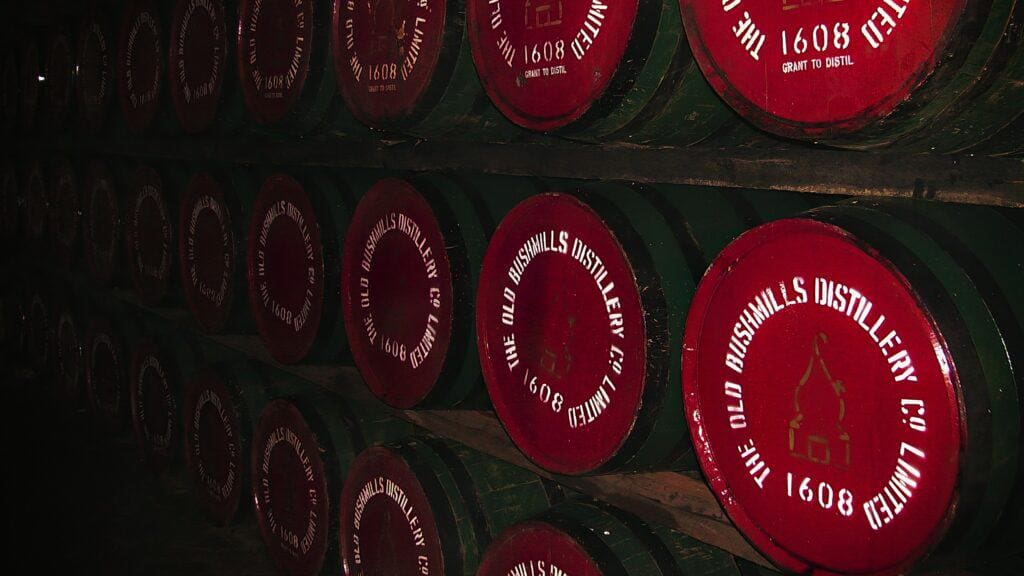
This period is often referred to as the “Golden Age” of Irish whiskey, as it witnessed a flourishing industry and the establishment of several iconic distilleries.
During this time, the spirit gained immense popularity both domestically and internationally. Its smooth and approachable character, coupled with the innovations in production, led to a surge in demand. Irish whiskey was celebrated not only for its taste but also for its reputation as a premium and sophisticated beverage.
The growth of Irish whiskey during the 18th and 19th centuries was marked by innovation, technological advancements, and the rise of Dublin as a centre of production. The adoption of column stills enhanced production efficiency and contributed to the unique character of the whiskey.
The flourishing distilleries in Dublin and the emergence of the “Golden Age” laid the foundation for Irish whiskey’s enduring legacy as a global spirit of distinction and quality.
Decline and Revival in the 20th Century
Factors Leading to the Decline of the Industry
The 20th century brought challenges and opportunities to the whiskey industry, marked by a period of decline followed by a remarkable resurgence driven by innovative approaches and a commitment to quality.
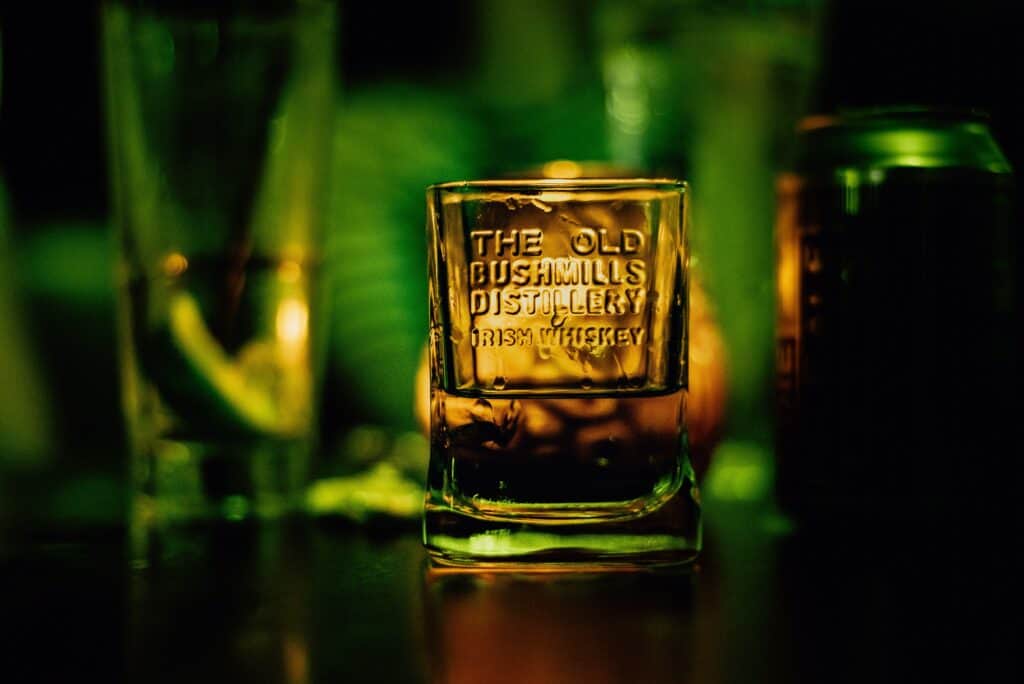
The Irish whiskey industry faced a series of setbacks that led to a decline in its prominence during the 20th century. Factors such as political instability, economic pressures, and changing consumer preferences contributed to the industry’s challenges.
The Irish War of Independence and subsequent civil unrest disrupted trade and production, making it difficult for distilleries to maintain operations.
Additionally, the global economic downturn and the introduction of Prohibition in the United States severely impacted whiskey exports. The loss of the American market, which had been a significant consumer of Irish whiskey, dealt a heavy blow to the industry’s profitability.
Efforts that Led to its Modern Resurgence
Despite the challenges, the latter half of the 20th century witnessed the gradual revival of Irish whiskey, driven by a combination of strategic efforts and innovative practices. One of the pivotal moments came with the establishment of the Irish Distillers Group in 1966, a merger of several distilleries.
A key innovation that played a crucial role in Irish whiskey’s resurgence was the efforts to enhance the visitor experience through distillery tours and tastings. By providing a tangible connection to the distillation process and the history of the spirit, distilleries became centres of education and enjoyment.
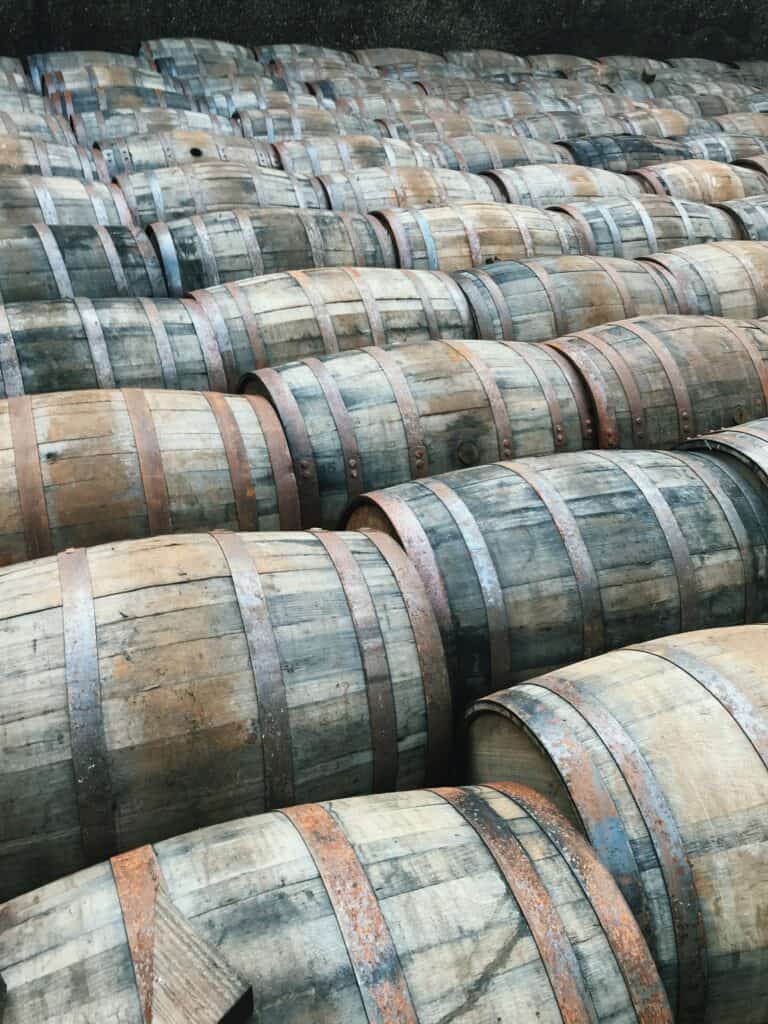
The re-emergence of Irish whiskey was further catalysed by the increasing global interest in artisanal and craft spirits. The industry’s commitment to quality and its storied history and unique styles resonated with consumers seeking authenticity and diversity in their drinking experiences.
The decline and revival of whiskey in the 20th century are a testament to the industry’s resilience, adaptability, and commitment to excellence. The challenges it faced spurred a renewed dedication to innovation, craftsmanship, and authenticity, paving the way for Irish whiskey’s renaissance on the global stage.
Today, the spirit stands as a symbol of tradition and innovation, a product of its rich history and the vision of those who worked to ensure its enduring legacy.
Cultural Significance of Irish Whiskey
Connection to Irish Identity and Heritage
A Symbol of National Pride
Irish whiskey transcends its role as a distilled spirit to become a symbol deeply intertwined with the Irish identity and heritage. It’s more than just a drink; it’s a reflection of history, community, and the enduring spirit of the Irish people.
Irish whiskey has been a source of national pride throughout Ireland’s history, reflecting the country’s resilient spirit in the face of adversity. In times of political upheaval and economic hardship, whiskey represented the Irish people’s determination to preserve their culture and traditions.
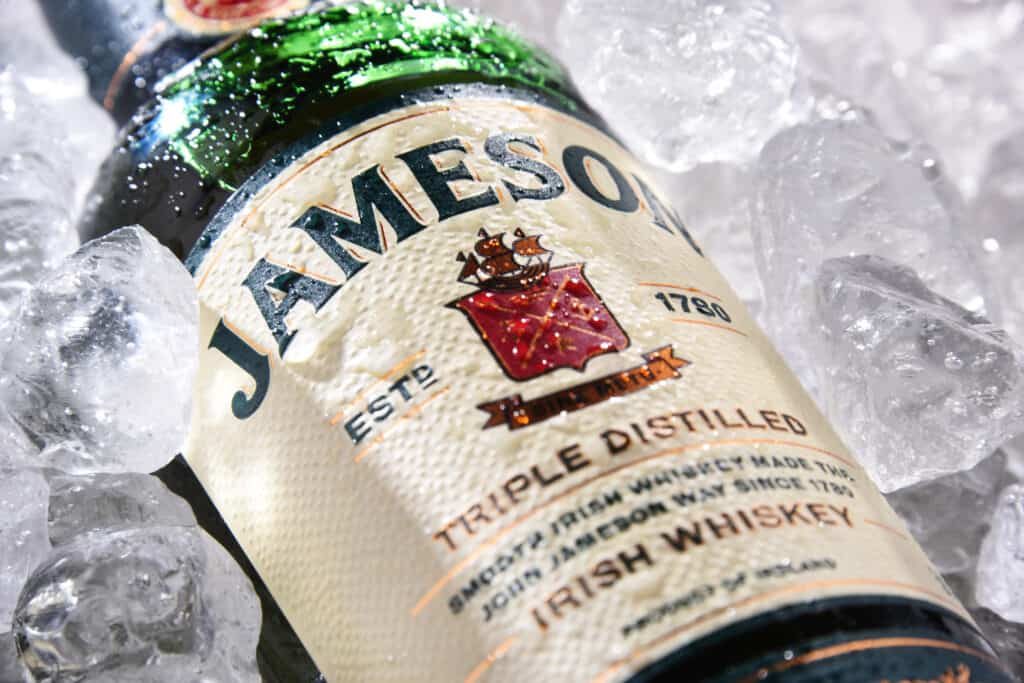
Incorporation in Literature, Music, and Folklore
Irish whiskey’s cultural significance is vividly depicted in literature, music, and folklore. Writers and poets such as James Joyce and W.B. Yeats often referred to whiskey in their works as a symbol of Irish hospitality, conviviality, and the essence of Irish life.
Music, too, has long celebrated the spirit of Irish whiskey. Traditional Irish folk songs often celebrate the joviality and camaraderie that accompanies sharing a dram of whiskey among friends.
The pub, where whiskey is often enjoyed, is central to the Irish social fabric and frequently serves as a backdrop for storytelling, live music, and gatherings that strengthen bonds within the community.
In folklore, Irish whiskey’s presence extends to legends and myths. It’s often associated with the legendary “little people,” the fairies and leprechauns, who were believed to inhabit the Irish landscape. These mythical creatures were known to have a fondness for whiskey and were said to sometimes play tricks on those who indulged too heavily.
The spirit’s cultural significance reaches far beyond its physical attributes. It embodies the resilience, warmth, and sense of community that defines the Irish identity. Its incorporation into literature, music, and folklore solidifies its place as a cherished element of Irish heritage.
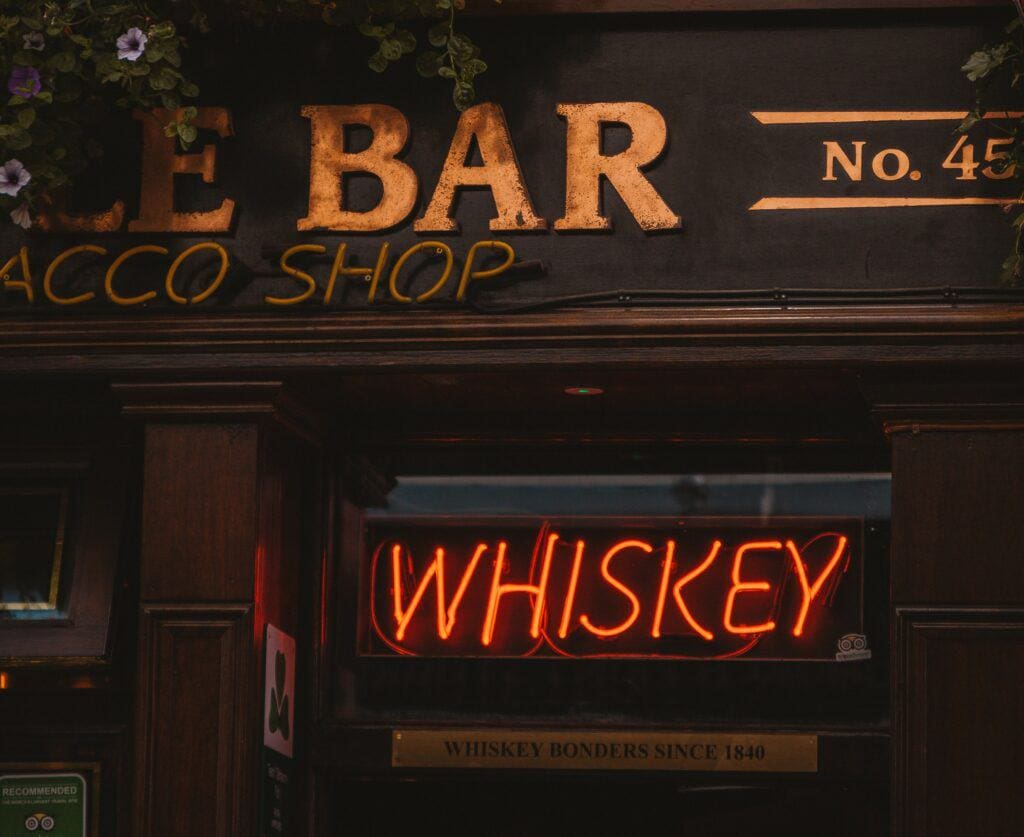
Social and Communal Aspects
Role of pubs and Distilleries
The consumption of Irish whiskey goes beyond the individual act of drinking; it holds a pivotal role in shaping social interactions and fostering a sense of community. In Ireland, whiskey is more than a drink – it’s a catalyst for connection, conversation, and shared experiences.
Pubs have long been central to Irish social life, serving as important meeting points for friends, families, and neighbours. Within these cosy establishments, sharing a glass of whiskey transcends a simple beverage choice; it becomes an invitation to engage in meaningful conversations.
Whiskey’s Role in Celebrations
Irish whiskey is deeply ingrained in the fabric of celebrations and rituals. From weddings to wakes, birthdays to holidays, whiskey often takes centre stage, marking the significance of life’s moments.
In Irish culture, a traditional toast is a heartfelt gesture that carries immense meaning. Raising a glass of whiskey in honour of someone, whether in celebration or remembrance, is a way to acknowledge their importance and the shared experiences of those gathered.
Furthermore, whiskey has its place in religious and spiritual contexts. In Ireland, it has been associated with rituals and customs that mark key moments in life. For example, in some regions, whiskey was used as a libation during funerals, symbolising a farewell to the departed.

The social and communal aspects of Irish whiskey consumption are integral to the fabric of Irish culture. Whiskey’s role in celebrations and rituals reinforces its significance in moments of joy and sorrow, encapsulating the essence of shared experiences and the bond that it fosters among people.
Distillation Techniques and Production Process
Triple Distillation: The Essence of Smoothness and Character
Triple distillation is the cornerstone of Irish whiskey production, a technique that emphasises purity and smoothness. Unlike other types of whiskey, such as Scottish single malt, which are usually distilled twice, Irish whiskey is typically distilled thrice.
This additional distillation imparts a remarkable clarity and elegance to the spirit. The triple distillation process serves to remove impurities and refine the flavours, resulting in a whiskey that is notably smoother on the palate.
This distinctive approach contributes to Irish whiskey’s lightness and delicacy, characteristics that have endeared it to a global audience. The triple distillation process also allows for greater control over the final product’s purity, making it a canvas for the master distiller’s artistry.
Variations in Raw Materials and Mash Bills
The art of crafting Irish whiskey extends beyond distillation techniques; it encompasses the selection of raw materials and the balance of grains in the mash bill. While barley is the primary ingredient, whiskey production may also involve the use of other grains to create diverse flavour profiles.
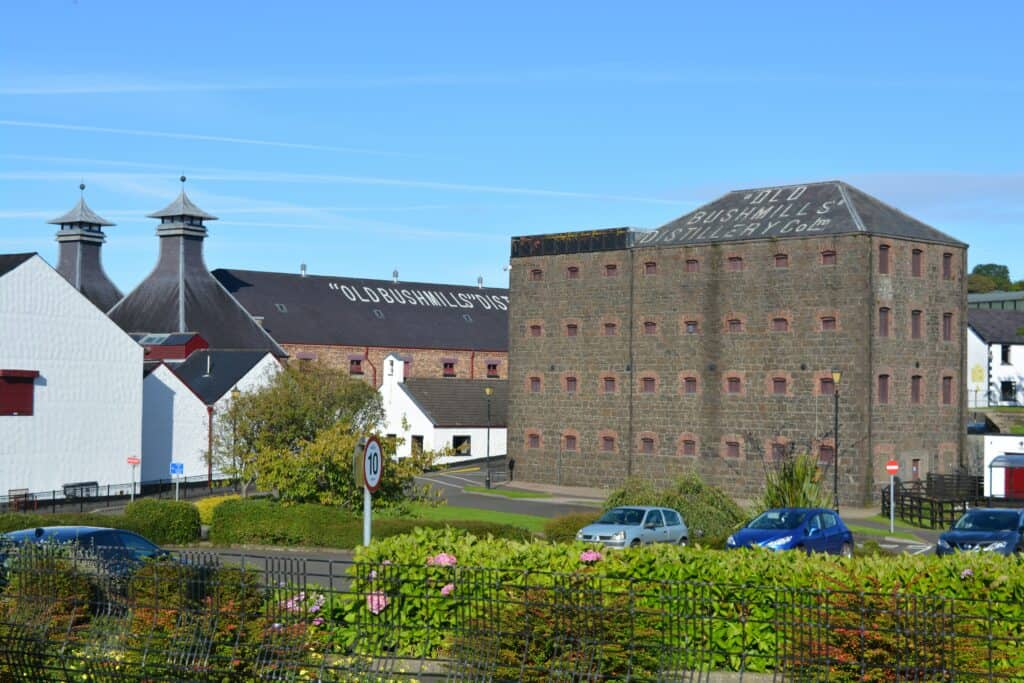
Barley, revered for its enzymatic properties that facilitate fermentation, remains at the heart of Irish whiskey. It is often malted, a process that involves germination and drying, which unlocks the sugars necessary for fermentation.
In some instances, other grains, such as corn or wheat, might be introduced into the mash bill. These variations contribute to a wider spectrum of flavours, from fruity and floral notes to hints of spice and creaminess. The use of multiple grains allows distillers to create a harmonious balance of flavours.
The distillation techniques and production process of Irish whiskey represent a harmonious blend of tradition and innovation. Triple distillation elevates the spirit’s smoothness and elegance, distinguishing it from other whiskey types.
Types of Irish Whiskey
Single Malt
Single Malt Irish whiskey is a refined and distinctive expression that embodies the essence of the country’s whiskey-making tradition. It is crafted exclusively from malted barley, distilled in pot stills, and produced at a single distillery.
Characterised by its smoothness, elegance, and often fruit-forward notes, single malt Irish whiskey showcases the skilful balance between the malt’s inherent sweetness and the nuanced influence of the distillation process.
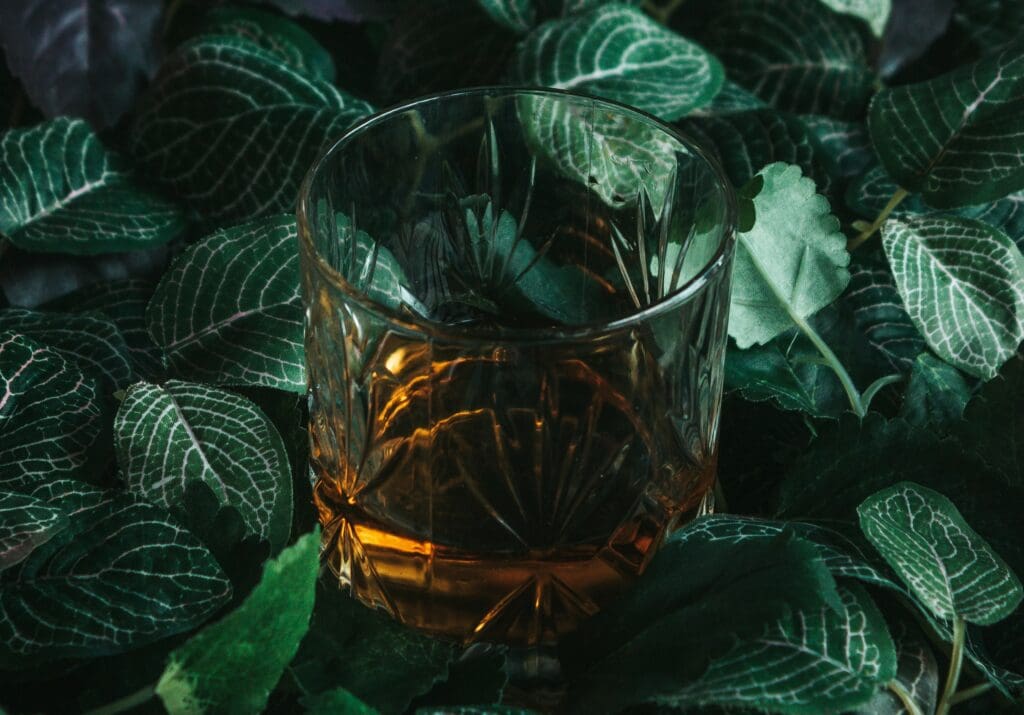
The triple distillation, common in Irish whiskey production, lends an exceptional smoothness to the final product. Single malt Irish whiskey is beloved for its accessible nature, making it a delightful choice for both newcomers to whiskey and seasoned connoisseurs seeking a refined experience.
Blended
Blended Irish whiskey is a harmonious fusion of various whiskey types, each contributing unique elements to create a balanced and flavorful composition. This category marries the individual strengths of different whiskeys – often combining single malt and grain whiskeys – to achieve a well-rounded profile.
Blended Irish whiskey serves as a testament to the art of blending, where the goal is to achieve a unified flavour while maintaining the characteristics of each component. This technique allows for a wider range of flavours to be explored, appealing to a diverse audience of whiskey enthusiasts.
Pot Still
Pot Still Irish whiskey is a proud nod to the past, embodying the traditional distillation methods that once defined Irish whiskey production. Historically, it was crafted using a mix of malted and unmalted barley, resulting in a spirit with a rich and robust flavour profile.
Pot still whiskey is known for its full-bodied character, often marked by notes of spices, fruits, and a distinctive creaminess.
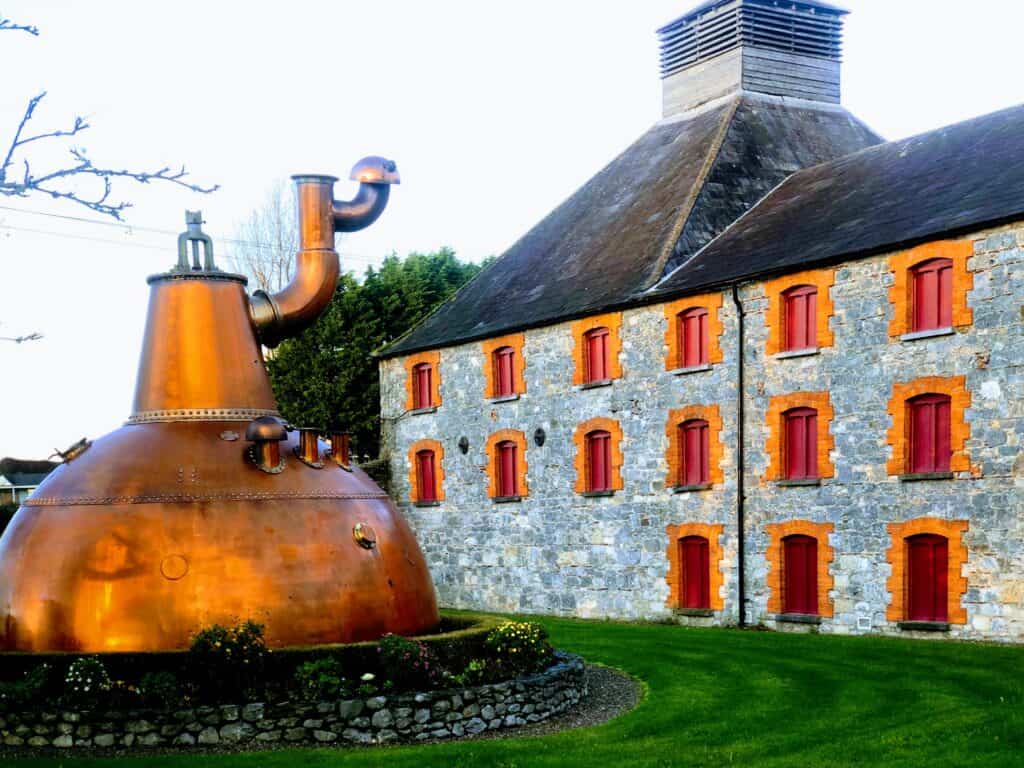
The resurgence of pot still whiskey reflects a desire to honour the heritage and techniques of the past while presenting a distinctive alternative to other whiskey styles. This resurgence has given distilleries the opportunity to experiment with recipes and ageing techniques, resulting in a renewed appreciation for the depth that pot still Irish whiskey offers.
Single Pot Still
Single Pot Still Irish whiskey is a subset of pot still whiskey, produced using only one type of still. Unlike blended pot still whiskey, which combines spirit from different stills, single pot still whiskey is made entirely in a single pot still.
This production method allows for the unique qualities of the pot still to shine through, resulting in a whiskey with a complex and robust flavour profile.
Single Pot Still Irish whiskey often exhibits a rich and spicy character, with notes of honey, dried fruits, and a hint of nuttiness. The use of unmalted barley imparts a unique texture and flavour that sets it apart from other whiskey types.
Global Impact and Market Trends
International Recognition and Awards
The renaissance of Irish whiskey has not gone unnoticed on the global stage, as evidenced by its increasing international recognition and awards. Over the past few decades, Irish whiskey has gained prominence in various prestigious competitions and has garnered accolades highlighting its quality and craftsmanship.
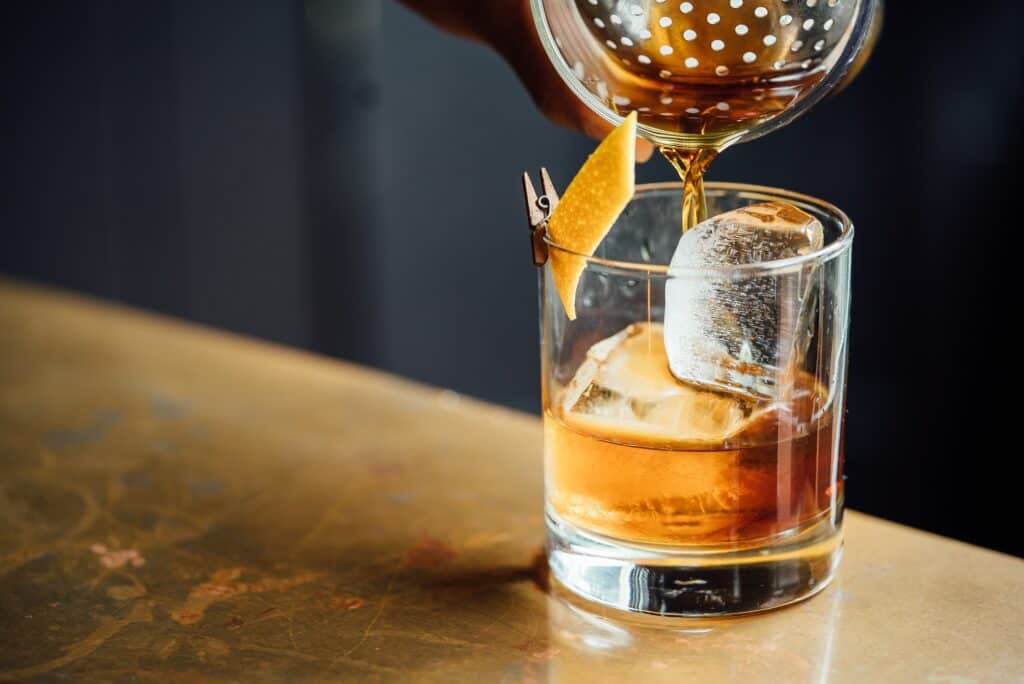
The rise of global whiskey competitions has provided a platform for Irish whiskey distilleries to showcase their products to an international audience. Whiskey enthusiasts, experts, and judges from around the world evaluate Irish whiskeys in blind tastings, assessing their flavour profiles, complexity, and overall quality.
These accolades have far-reaching implications for the marketability and reputation of Irish whiskey. As consumers seek authenticity and excellence in their spirits choices, the recognition garnered from competition lends credibility to Irish whiskey’s resurgence.
Growth in Exports
The global demand for Irish whiskey has surged in recent years, resulting in substantial growth in exports. Key export markets for Irish whiskey include the United States, Canada, the United Kingdom, and European and Asian countries.
Consumer preferences have also played a pivotal role in shaping the growth trajectory of Irish whiskey exports. Modern consumers, particularly those seeking artisanal and craft spirits, are drawn to Irish whiskey’s smoothness, versatility, and connection to tradition.
Economic Implications for the Industry
The growth of Irish whiskey exports has profound economic implications for the industry and the nation as a whole. As demand increases, distilleries invest in expanding production capabilities, infrastructure, and innovation.
This expansion, in turn, generates job opportunities and stimulates economic activity in rural and urban areas alike. The rise of distillery tourism, driven by the allure of exploring the production process and tasting rare and aged expressions, contributes significantly to local economies and tourism revenue.
Furthermore, the export success of Irish whiskey reinforces its status as a valuable cultural export. As a product deeply rooted in Irish history and identity, the global appeal of Irish whiskey introduces consumers worldwide to a piece of Irish culture.
Notable Distilleries in Ireland
Jameson Distillery, Dublin, Ireland
One of the most iconic names in Irish whiskey, the Jameson Distillery in Dublin stands as a beacon of tradition and excellence. Established in 1780 by John Jameson, this distillery has been a cornerstone of Irish whiskey history.
Today, while no longer producing whiskey, the Jameson Distillery offers immersive experiences that transport visitors through the centuries-old process of crafting this world-renowned spirit. The distillery’s legacy is marked by its smooth and approachable style, a hallmark of Irish whiskey.
Bushmills Distillery, County Antrim, Northern Ireland
Crossing the border into Northern Ireland, the Bushmills Distillery holds a special place in the world of whiskey. With a history dating back to 1608, Bushmills is one of the oldest licensed distilleries in the world.
Located in County Antrim, the distillery draws its water from the nearby St. Columb’s Rill, contributing to the unique flavour profile of its whiskeys. Bushmills is known for its triple-distilled single malt Irish whiskey and offers visitors a chance to explore its history, craftsmanship, and picturesque surroundings through guided tours and tastings.
Teeling Whiskey Distillery, Dublin, Ireland
In the heart of Dublin, the Teeling Whiskey Distillery stands as a testament to the modern renaissance of Irish whiskey. Established in 2015, it was the first new distillery in Dublin in over a century. The Teeling family has a storied history in Irish whiskey, and the distillery aims to continue its legacy through innovative approaches to production.
Visitors to the Teeling Distillery can experience a combination of tradition and innovation, witnessing every step of the distillation process, from mashing to maturation. The distillery’s commitment to quality and experimentation has resulted in a range of award-winning whiskeys that showcase the evolving landscape of Irish whiskey.
Midleton Distillery, County Cork, Ireland
The Midleton Distillery is a powerhouse of Irish whiskey production located in County Cork. It’s home to an impressive range of brands, including Jameson, Redbreast, and Powers. With its history dating back to the 18th century, the distillery is renowned for its triple-distilled approach and innovative techniques.
The Midleton Distillery showcases the depth and diversity of Irish whiskey through its various brands, highlighting the heritage and craftsmanship that define the industry.
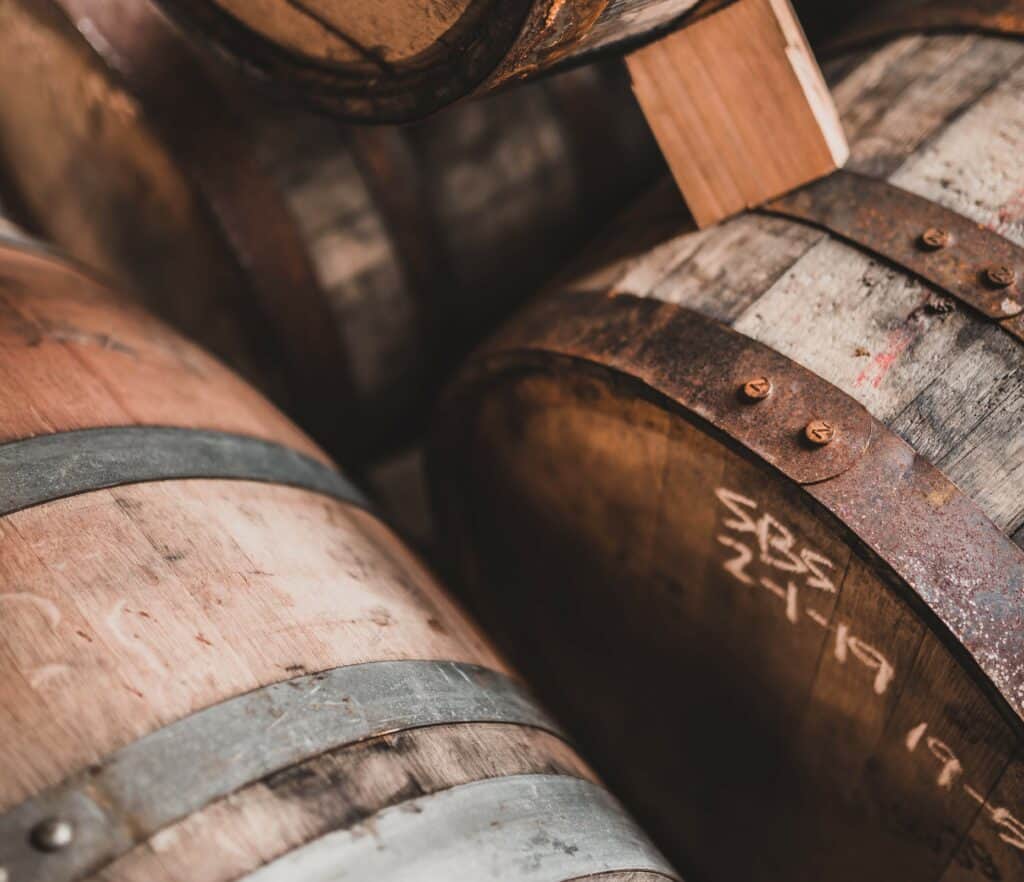
Irish Whiskey is an Integral Part of Irish History
In the realm of distilled spirits, few beverages possess the depth of history, the resonance of cultural significance, and the diversity of flavours found in Irish whiskey. This journey through the world of Irish whiskey has illuminated its multifaceted nature, transcending its role as a mere drink to become a symbol of identity, community, and craft.
In the heart of Ireland and Northern Ireland, notable distilleries like Jameson, Bushmills, Teeling, and Midleton stand as guardians of tradition and innovation, each weaving its unique narrative into the grand tapestry of Irish whiskey.
Irish whiskey is more than a spirit – it’s a story of history, culture, and craftsmanship. It’s a celebration of the past and a promise for the future. It’s a symbol that brings people together, transcending borders and generations.
If you’re interested in staple Irish drinks, check out our blog on Guinness: The Best Guide to Ireland’s #1 Beer.






